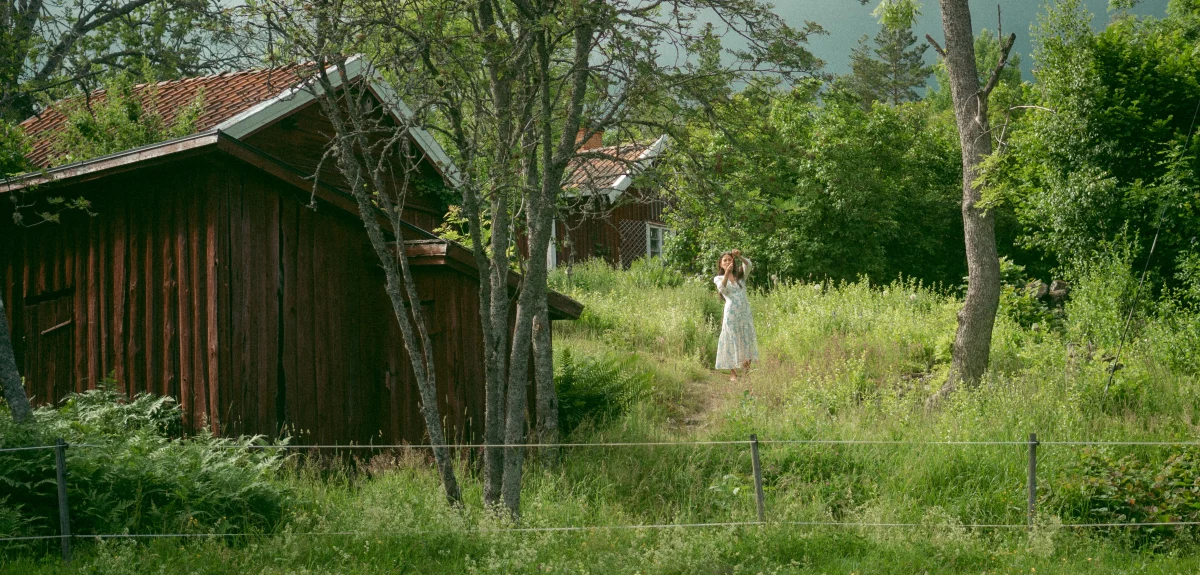
Midsummer’s Eve in Sweden
Everything you need to know about the cherished holiday.
Just before the summer solstice, the longest day of the year, when the sun reaches its highest point in the sky, Midsummer’s Eve is celebrated in Sweden. The day was originally a church holiday to celebrate the birth of John the Baptist on June 24th, but there are those who believe that vestiges of the celebration can be traced all the way back to pre-Christian times. Although Midsummer’s Eve is, for all practical purposes, no longer associated with the church these days, it’s still an important symbol of summer’s verdure, serenity, and mysticism.

Herring and schnapps
A classic Midsummer’s Eve lunch traditionally consists of maatjes herring (fresh, pickled baby herring coated with sugar, salt, and spices such as cinnamon and powdered sandalwood), new potatoes, natural sour cream, and diced chives. This is typically accompanied by a pale ale with a schnapps or “nubbe” (shot of liquor). Other common Midsummer’s Eve menu items include deviled eggs with various toppings, a hearty pie topped with aged Västerbotten cheese, various early-season fruits and vegetables and, of course, the obligate “gräddtårta” (custard pie) with fresh strawberries.
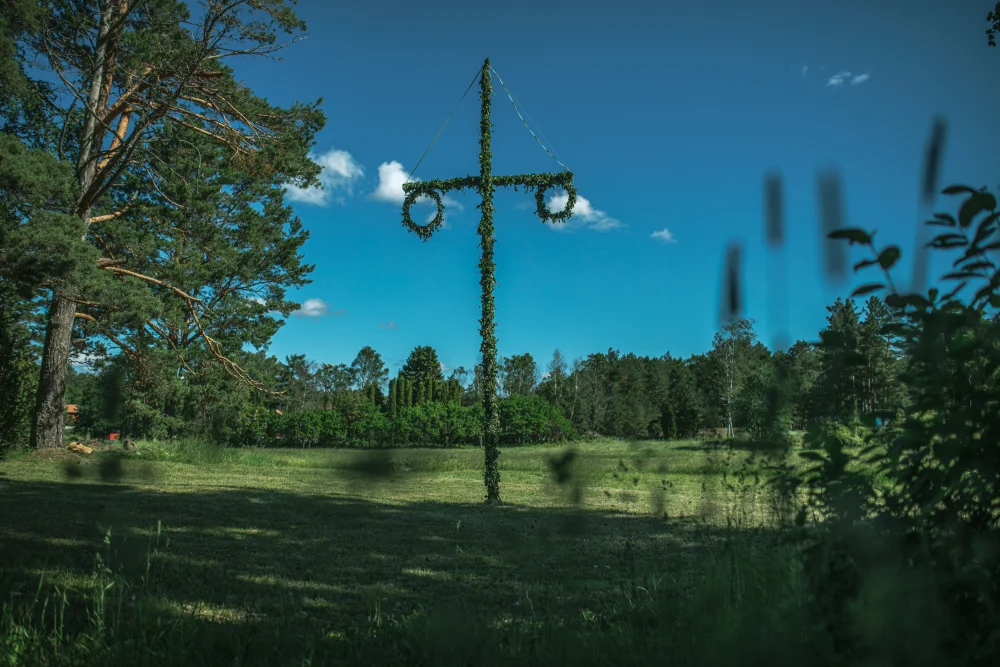
Decorating with leaves
One of the most important parts of the holiday is the maypole. This is a tall pole in the shape of a cross, decorated with birch or oak leaves and flowers and bearing a garland on the end of each arm. On Midsummer’s Eve, the pole is raised in gardens, fairgrounds, and community centres and people gather to dance in a ring around the pole.

Attire
Since Midsummer’s Eve is a popular, long-awaited holiday, people dress in style for the occasion, preferably in white or light colors. Thinner summer clothing is common, but even traditional folk costumes are worn in certain parts of the country – although most often at larger, public Midsummer’s Eve celebrations. Men, women, and children alike wear a wreath adorned with leaves and flowers – the Midsummer’s Eve wreath.
Mysticism
Midsummer’s Eve has always been closely linked to mysticism, superstition, and the occult. In the past, people believed that the lush vegetation had magical qualities and that the bright June night sky attracted supernatural beings. While traditions such as rolling around naked in the midsummer dew and wearing your Midsummer’s Eve wreath when you take a dip in ice-cold waters on Christmas Day aren’t particularly common any more, some traditions still remain today. This includes, for example, picking seven or nine different types of flowers to place under your pillow so that your dreams that night will reveal the identity of your future wife or husband.
Three places to celebrate Midsummer’s Eve in Sweden
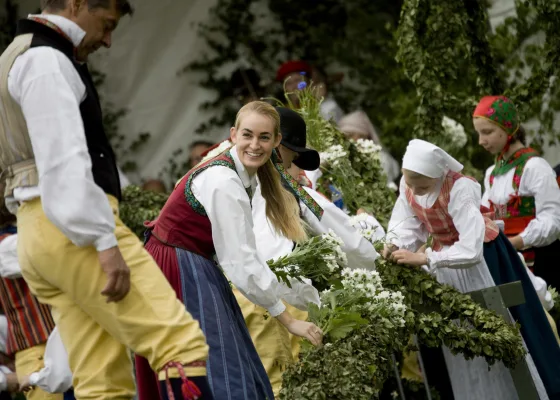
As it’s always been done in the heart of Dalarna
Gropen

Midsummer’s Eve is celebrated in a traditional style in Leksand, Sweden with a big, festive event in Gropen, a lush valley in the middle of town. A leaf-and-garland-adorned maypole is hoisted into place, where it’s surrounded by people dancing in a ring and musicians playing the Hardanger fiddle. The celebration begins as the choir and the fiddlers row up the Österdalälven river to the foot of the bridge and then continue onward to Gropen wearing flowers and wreaths. Many of the visitors wear the traditional Dalarna folk costume. You can even rent one yourself if you’d like! Midsummer’s Eve in Leksand is part of the Midsummer Week package, which offers a number of cultural events and experiences.
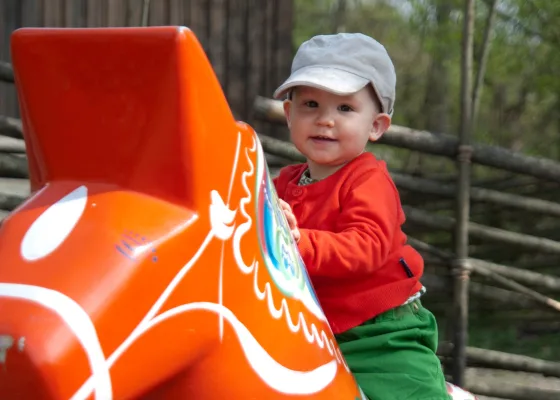
Historical traditions in the Swedish capital
Skansen

Midsummer’s Eve at the Skansen outdoor museum in Stockholm is a three-day-long event that exposes you to a wide range of Swedish traditions. You can play and dance around the maypole, weave a birch leaf wreath, listen to folk music, and enjoy the bright summer nights here. Midsummer’s Eve at Skansen is a lively, popular celebration offering activities for both children and adults.
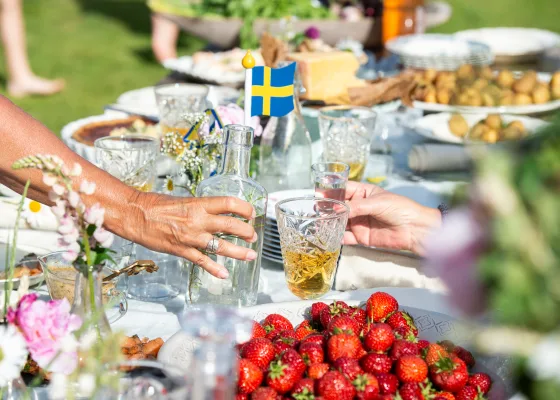
Midsummer’s Eve in the idyllic archipelago
Styrsö Bratten

On Styrsö, one of the larger, more popular islands in Gothenburg’s southern archipelago, you can experience a classic Swedish Midsummer’s Eve celebration in idyllic surroundings. You can dance around the festively decorated maypole, eat herring and potatoes to your heart’s content, and sip schnapps right by the sea here. The Midsummer’s Eve celebration on Styrsö is a family-friendly event that attracts local islanders and visitors alike.
Text by Agnes Regell